What acoustic guitar string gauges should I use?
Our definitive guide to stringing your acoustic with the right gauge to suit your playing style
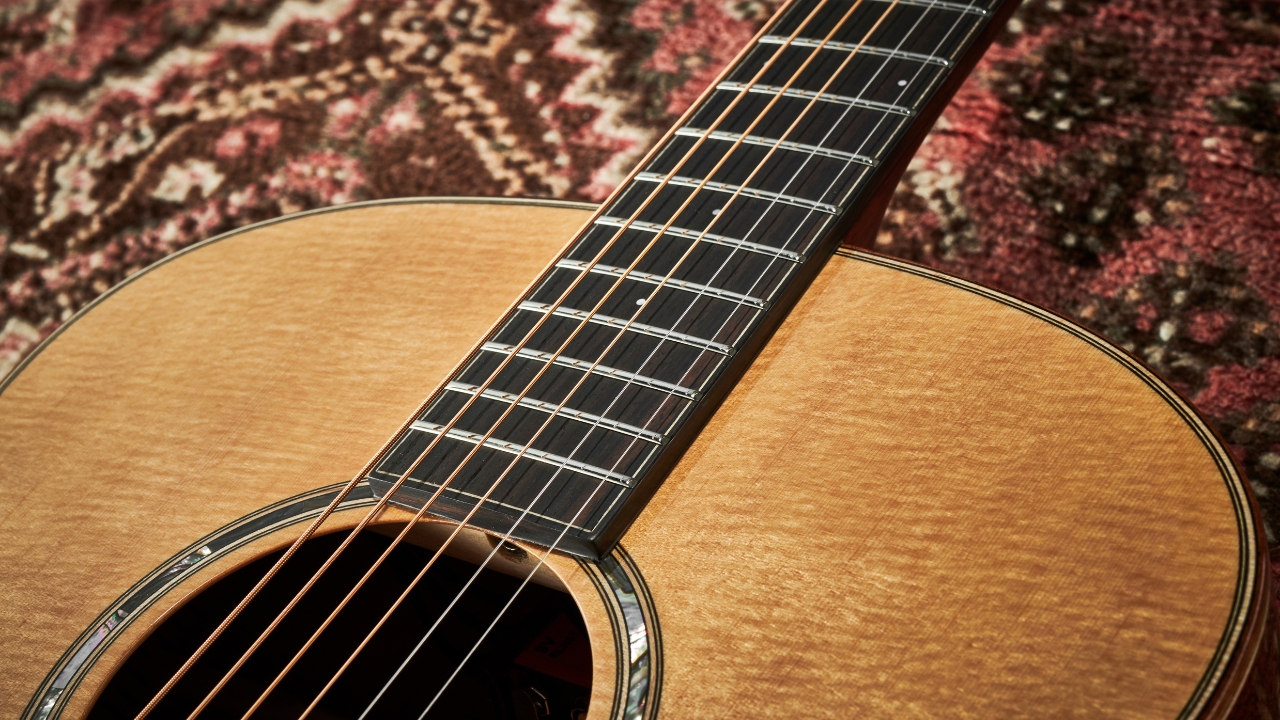
We’ve all encountered acoustic guitars that seem unplayable with their inflexible strings and unforgiving actions. You might think that this is a result of bad craftsmanship, but chances are it’s mostly down to the wrong string gauge being used, usually in tandem with a poor setup.
String gauge plays a massive part in how a guitar plays and feels, and I often find it gets overlooked by guitar players who tend to stick with what they know. If you're finding an instrument difficult to play, filing the nut or sanding the bridge down can be avoided completely by just stringing your acoustic with the right gauge and executing quick truss rod adjustment.
The correct string gauge for your playing style can turn the punishing playability of your acoustic guitar right around, completely changing the character and profile. So, if you’re struggling with the playability of your acoustic, or you want to know a little more about string gauges before changing your strings, you’re in the right place. In this article I will take you through the ins and outs of acoustic guitar string gauges, giving you all the info you need to work out which gauge is right for you. Let’s get to it...
What are string gauges?
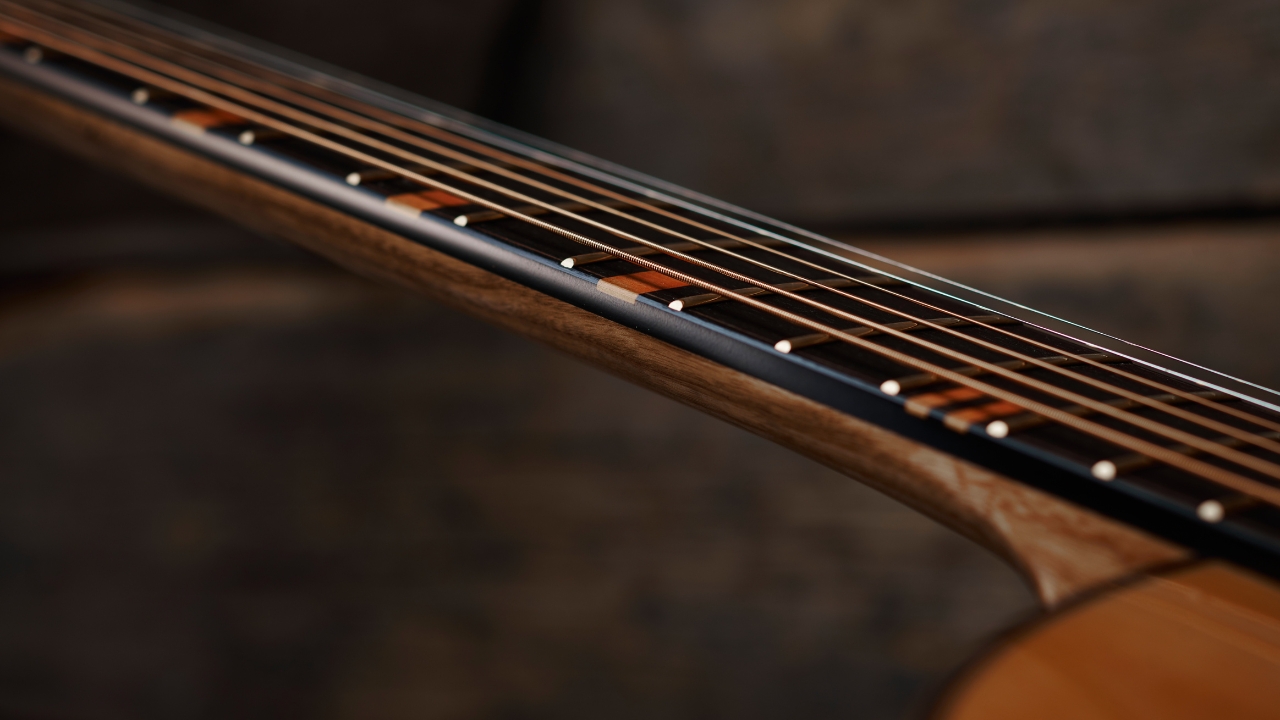
String gauge refers to the circumference of the string; that is, how thick it is. Measured in thousandths of an inch, gauges are typically referred to as ‘light’, ‘medium’, or ‘heavy’ which is determined by the gauge of the thinnest string. You’ll hear more experienced guitarists refer to strings as ‘9s’ or ‘14s’ for example, which determines whether they’re a light or heavy gauge respectively.
How does string gauge affect playability?
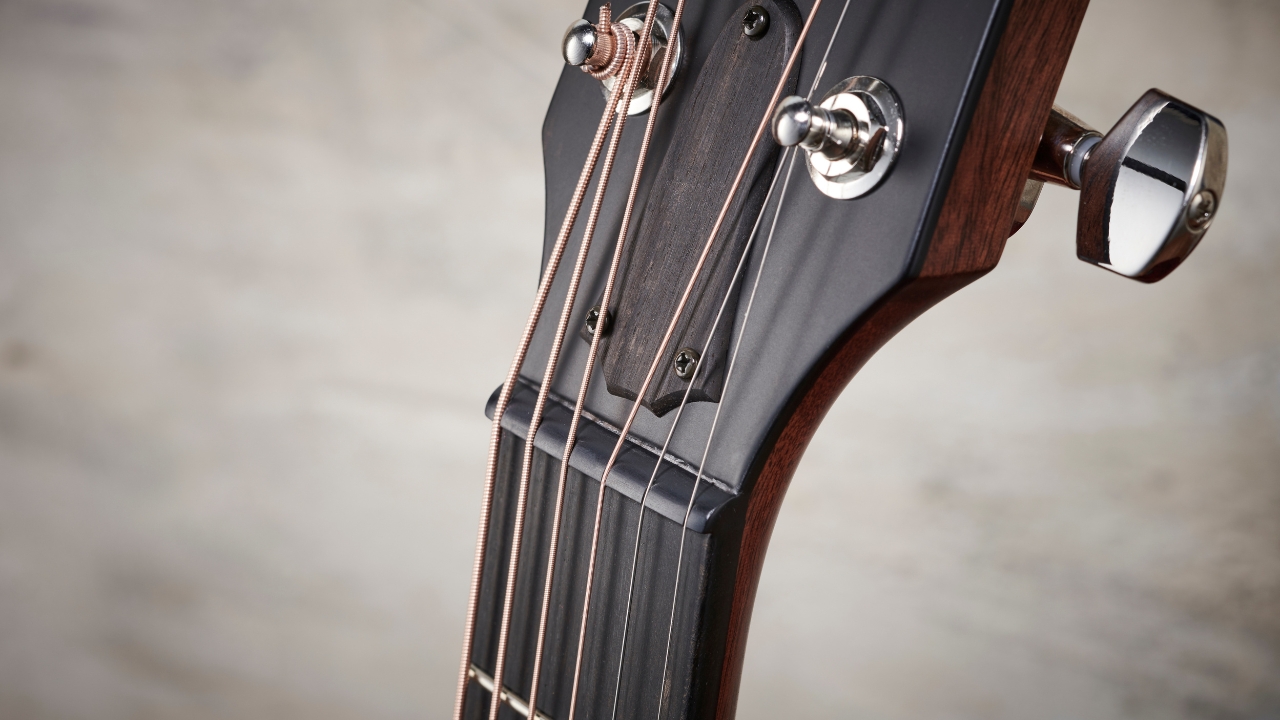
A lighter gauge will typically feel more flexible, making playability a lot easier. It'll make the playing feel of your acoustic much more relaxed, with vibrato coming a lot easier and even allowing you to do bigger bends. Light strings will, however, have less projection and sustain versus a heavier set of strings. It’s also easier to push them out of tune as they require a lot less force when fretting, and it's easier to break them with overzealous bending or strumming.
Heavier string gauges require more tension to get to standard tuning, so they’ll often feel a lot more unforgiving under your fingers. Larger string gauges also provide more sustain and volume, so seasoned players may look to use them to improve the projection and tone of their acoustic. For a new guitarist, heavy strings will be pretty much impossible to play for an extended period, and can often lead to new players giving up on the instrument as the demands are too physically tough.
A note on setup
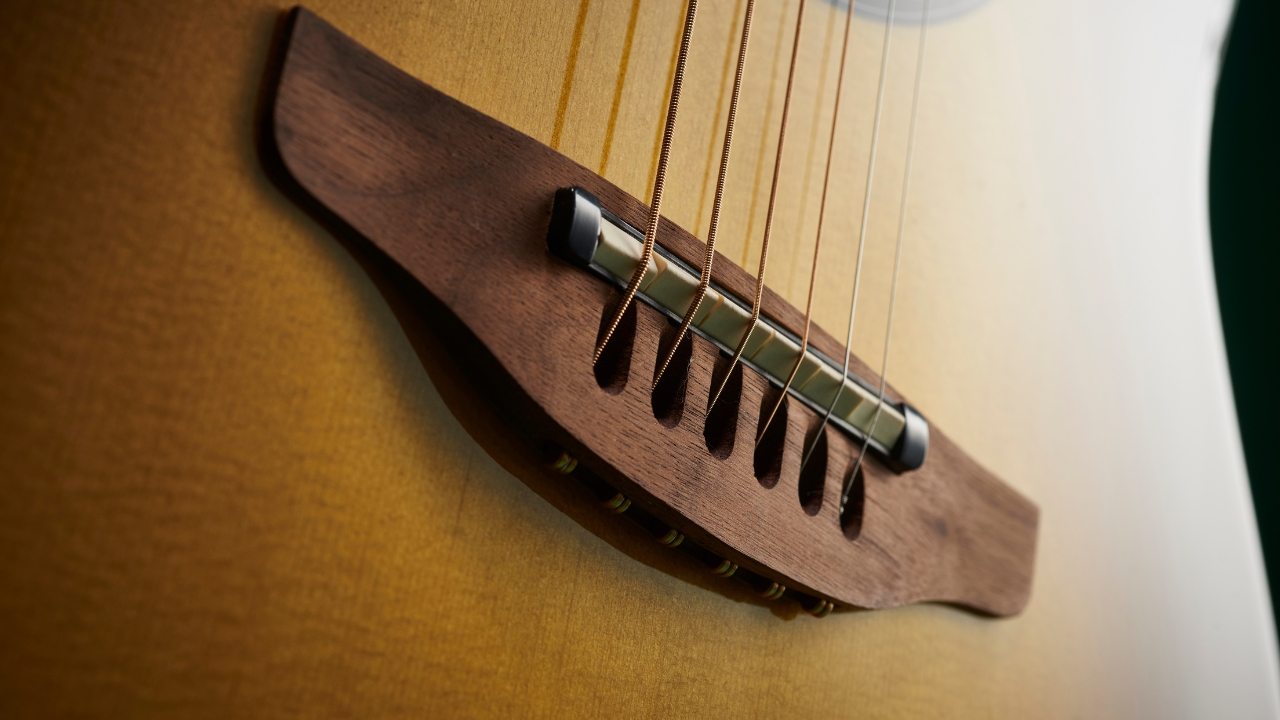
Before we get to the gauges themselves, you'll need to consider the setup of your acoustic guitar. If you’re going to change your string gauge, you will likely need to adjust your truss rod too, to ensure there isn’t too much or too little tension on the neck of your guitar. Heavier strings will pull more on the guitar neck, which can cause the action (string height) to go too high, whereas a lighter gauge doesn’t pull as much, resulting in an action that’s too low.
Want all the hottest music and gear news, reviews, deals, features and more, direct to your inbox? Sign up here.
It’s a simple adjustment that has an unearned reputation for being difficult. So long as you have the right knowledge before you carry out a truss rod adjustment, trust me you’re going to have to work very hard to break your guitar doing one. We have a great guide on adjusting your guitar’s truss rod, which will give you all the info you need.
Acoustic string gauges
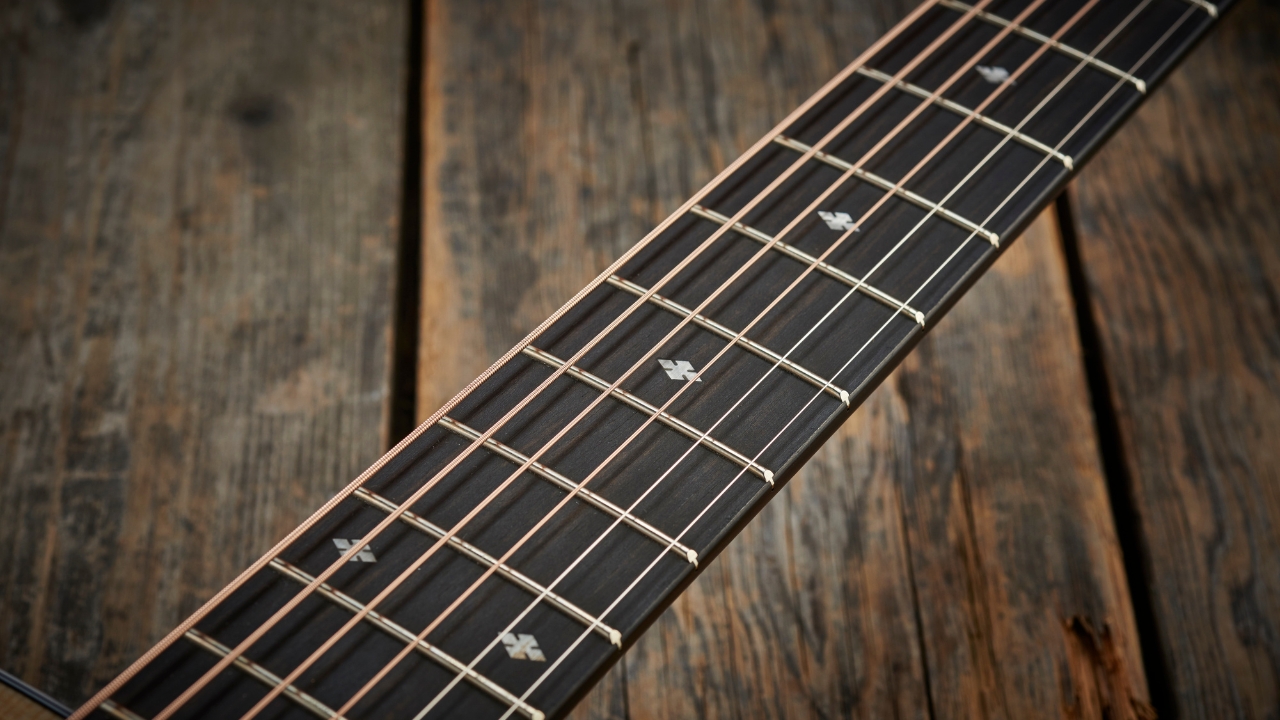
So, which should you choose? Well, I’ve listed all the major types below, with some of their key attributes to get you pointing in the right direction. Luckily strings are relatively cheap, so it’s shouldn't leave you out of pocket to experiment with different sets to find your perfect match.
Different companies will refer to certain string gauges by different names, so I’ve aligned the naming conventions here with two of the most popular acoustic string brands, D’Addario and Ernie Ball, which should make it easier to get your head around.
If you do find yourself in doubt, then looking at the gauges themselves rather than the names should provide a quick insight as to whether a string gauge is light, medium, or heavy enough for you.
Extra light
Extra light sets are perfect for beginner guitar players. They offer easy playability that will make fretting chords a lot more forgiving, as well as making it easier to play riffs and licks. Typically extra light gauge string gauges will be somewhere around the 10-50 mark, but this can vary. For most acoustic guitar sets, if the highest string is a 10 it will typically be an extra light gauge.
Light
Still easy on your fretting hand, light sets are a step up from extra light, giving you a touch more projection and sustain. Light gauges pretty much always come as 11-52, as they’re a pretty well-defined gauge in the world of acoustic guitar strings. Great for standard tuning, they're the natural stepping stone for beginners who want to improve their strength, or more seasoned players who want an easier playing experience.
Medium
One of the most popular gauges for acoustic guitarists, medium gauge strings provide the perfect balance between the sustain and projection of a heavier set, whilst retaining the slinky playability of lighter gauges. Most medium gauges will be a 13-56 set, as it is a fairly standardized gauge across different manufacturers. They’re also utilized frequently by players who want to tune a half-step or whole step down.
Heavy
Not for the faint of heart or weak of wrist, heavy gauge strings are pretty rare on acoustic guitars in my experience. That's for good reason too, as most guitarists wouldn't be crazy enough to put themselves through it! Normally a heavy gauge will be in the region of 14-59, so you won’t want to play these in standard without a proper setup on your acoustic, or you're a real masochist. They’re great for downtuning a whole step and further however, if that’s your bag.
12-string sets
12-string guitar string sets are slightly different from regular ones too. The two highest strings will feature two courses of the same gauge, as they are tuned in unison, but from that point on the gauges will divert to much lighter gauges. On a light 12-string set you'd normally find an 8 to pair with the G string, a 12 for the D, 18 for the A, and 27 for the E. This is so you can tune them an octave up from the regular sized string, which is what gives a 12-string guitar its sparkly tone.
Custom gauges
There are loads of custom gauges available too if you want to fine-tune your selection further. These can include combinations of light high strings and heavier low strings, or half gauges that sit in between the more standardized versions. If you find a particular set isn't quite working for you, trying one of these custom gauges may well provide the playing experience you're looking for.
Conclusion
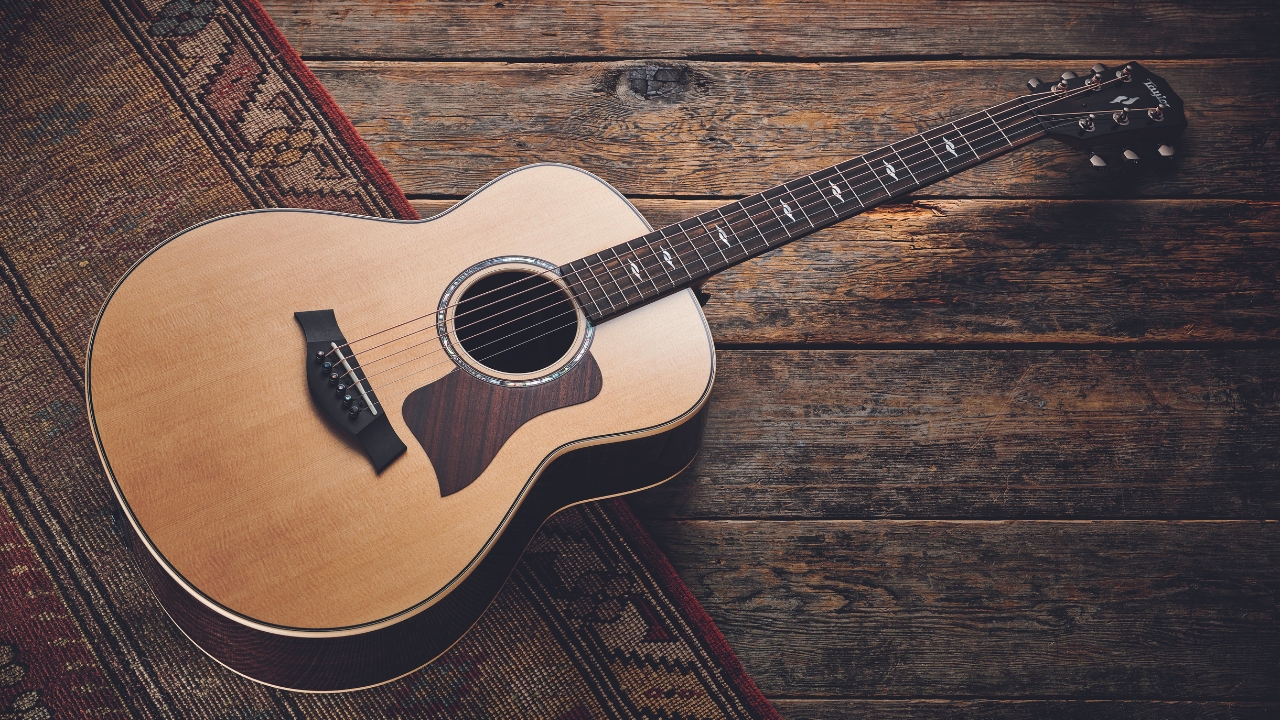
Choosing the right string gauge will massively affect the playability and performance of your guitar, so it’s certainly worth experimenting to find what you like. Combined with a good setup, a fresh string gauge can totally change an instrument you don’t like into something much more agreeable, or just give you a creative boost by changing the way you play the instrument.
I've known many players over the years who've changed string gauges and suddenly unlocked quicker playing, better sustain, easier bending, and many other benefits. The best thing is because strings are cheap, it's not difficult to change back or try something else if you find it doesn't quite match your expectations.

Matt is a Junior Deals Writer here at MusicRadar. He regularly tests and reviews music gear with a focus on audio interfaces, studio headphones, studio monitors, and pretty much anything else recording-related. Matt worked in music retail for 5 years at Dawsons Music and Northwest Guitars and has written for various music sites including Guitar World, Guitar Player, Guitar.com, Ultimate Guitar, and Thomann’s t.blog. A regularly gigging guitarist with over 20 years of experience playing live and producing bands, he's also an alumnus of Spirit Studios, where he studied studio engineering and music production.